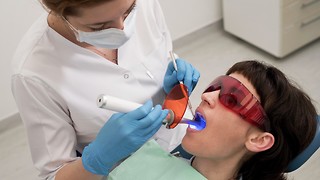Peanut allergy treatment discovered at Cambridge
Researchers have demonstrated the success of a novel allergy cure

A Cambridge study has found a way to effectively treat peanut allergy in young people, which causes more fatal reactions than any other food intolerance. This development could free many patients and families from the constant fear of a dangerous reaction.
However, the treatment will not be available for several years, and researchers have warned that it would be dangerous to attempt outside a clinical setting.
In the University of Cambridge and Cambridge University Hospitals study, eighty-five patients underwent oral immunotherapy, in which they consumed gradually increasing amounts of peanut flour mixed into their food.
In the first phase of the experiment, the children about to begin treatment could tolerate, on average, just 45 miligrammes (mg) of peanut flour. Their intake was increased every two weeks. After 6 months, they were ingesting 800 mg of the flour every day. After a full course of treatment, they took a double-blind peanut challenge of 1400 mg of powder, roughly equal to ten peanuts. 62% of the treated group passed this.
Not one of the children in the untreated control group was able to take the ten-peanut challenge without experiencing an adverse reaction. However, after the success of the original treatment group, the control group was then given six months of treatment and showed similar positive results.
Peanut allergy is severely disruptive to a normal life, as patients have to monitor everything they eat. It particularly impacts social lives, as eating at restaurants and parties must be avoided. Patients carry antihistamines or adrenaline at all times in case of accidental ingestion.
Dr Andrew Clark, one of the leading researchers in the team, said: “Before treatment, children and their parents would check every food label and avoiding eating out in restaurants.”
"The families involved in this study say that it has changed their lives dramatically.”
The treatment does not come without risk, however. Each fortnightly dose increase had to be taken with medical supervision. The reactions, although not uncommon, were usually mild. Nonetheless, on two occasions, one patient had to self-administer adrenaline at home after a dose of the treatment, and was withdrawn from the study.
 News / Cambridge to have ‘England’s first official cycle street’7 October 2025
News / Cambridge to have ‘England’s first official cycle street’7 October 2025 Lifestyle / Which Cambridge tradition are you?6 October 2025
Lifestyle / Which Cambridge tradition are you?6 October 2025 News / Tompkins Table 2025: Trinity widens gap on Christ’s19 August 2025
News / Tompkins Table 2025: Trinity widens gap on Christ’s19 August 2025 Comment / Flying the flag, properly8 October 2025
Comment / Flying the flag, properly8 October 2025 News / Uni clears don accused of ‘abhorrent racism’3 October 2025
News / Uni clears don accused of ‘abhorrent racism’3 October 2025









